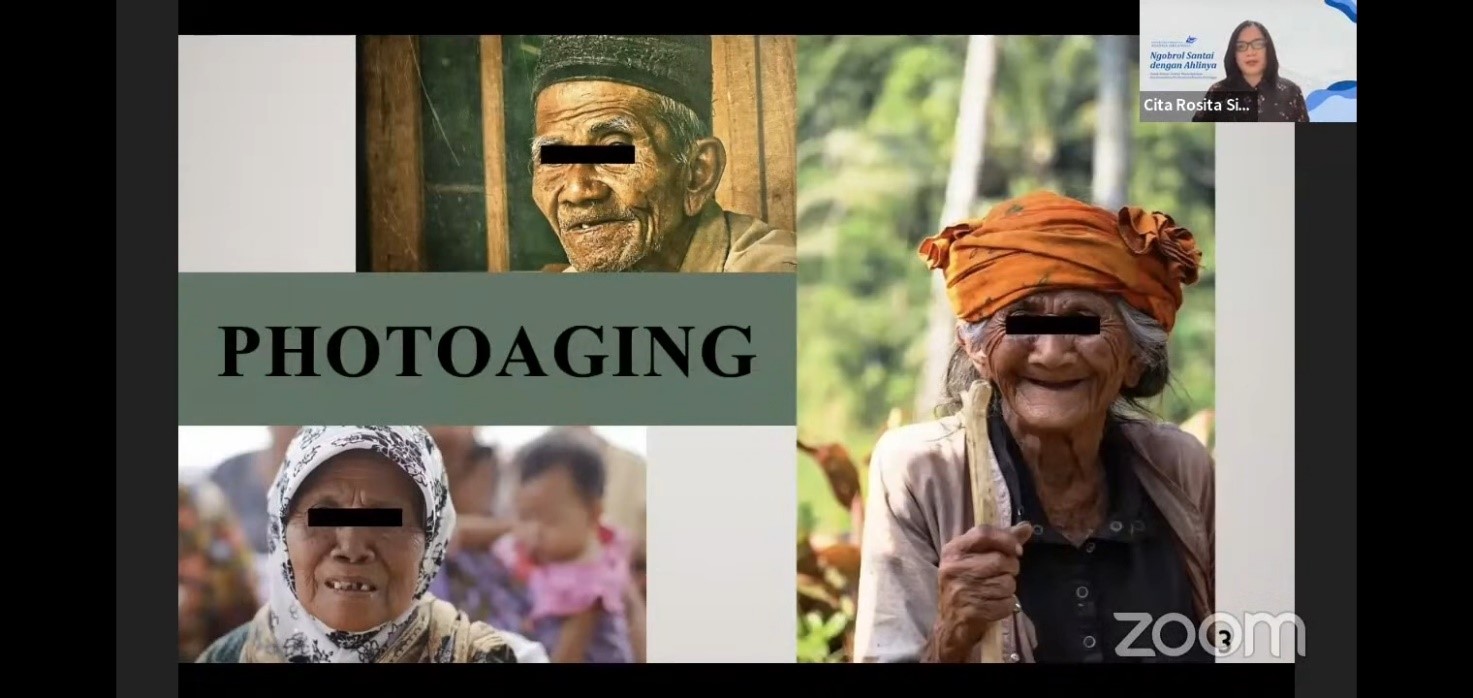UNAIR NEWS – Ksatria Airlangga Floating Hospital (RSTKA) held another Casual Chat with Experts (NGOBRAS) with the theme of the Role of Conditioned Medium Stem Cell in Dermatology. The 46th NGOBRAS held on Sunday, January 23, 2022 presented Prof. Dr. Cita Rosita Sigit Prakoeswa, dr., Sp.KK(K), FINDV., FAADV, Professor of the Faculty of Medicine (FK) Universitas Airlangga (UNAIR).
At the beginning of the presentation, Prof. Cita said that photoaging is premature aging of a person caused by sunlight. Free radicals, continued Prof. Cita, have a central role in causing photoaging, both in the context of molecular and cellular tissue, including the characteristics of the skin that we can see with the naked eyes or with various tools. If left untreated, photoaging has the potential for skin cancer and cosmeceutical problems.
“The sun actually inhibits antioxidants, but antioxidants can’t inhibit free radicals. Therefore, photoaging occurs. Photoaging itself has various treatments, but the efficacy and cost must be considered. The cost is still quite expensive, so many people ignore it even though photoaging has the potential for skin cancer and cosmeceutical problems,” she explained.
Furthermore, Prof. Cita explained that Mesenchymal Stem Cells (MSCs) are stem cells that continue to regenerate. Stem cells themselves have various benefits including modulating the immune system and increasing various growth factors. Prof. Cita also emphasized the reason why Mesenchymal Stem Cell-Conditioned Medium (MSC-CM) is chosen over MSC itself. This is because MSC-CM has more advantages than MSC such as the ability to be stored, distributed, and used by others.
“MSC must come from oneself. For example, I use my sensor, and then others do the same. There are other limitations too such as having a standardized laboratory and facing the high level of difficulty,” said Prof. Cita.
“Meanwhile, MSC-CM is cultured stem cells without cells. When compared to stem cells, the efficacy is definitely stronger, but MSC-CM has advantages such as the ability to be stored, distributed, and used by others because there are no cells there,” she added.
Then, Prof. Cita emphasized the advantages of using MSC-CM compared to stem cells. Stem cell capacity is certainly higher than MSC-CM, but the process is still expensive and cannot be carried out easily. It must be under special conditions. While MSC-CM has no potential rejection, the transport is easy, and the price is more affordable.
“The MSC-CM protocol is the same as for stem cells, but there is no potential rejection because it is used for other people, and there are no cells there. The transport is easy and, of course, the price is far more affordable compared to stem cells. If the production is on a large scale, of course, the price can be further suppressed,” she explained. (*)
Author: Wiji Astutik
Editor: Binti Q. Masruroh





